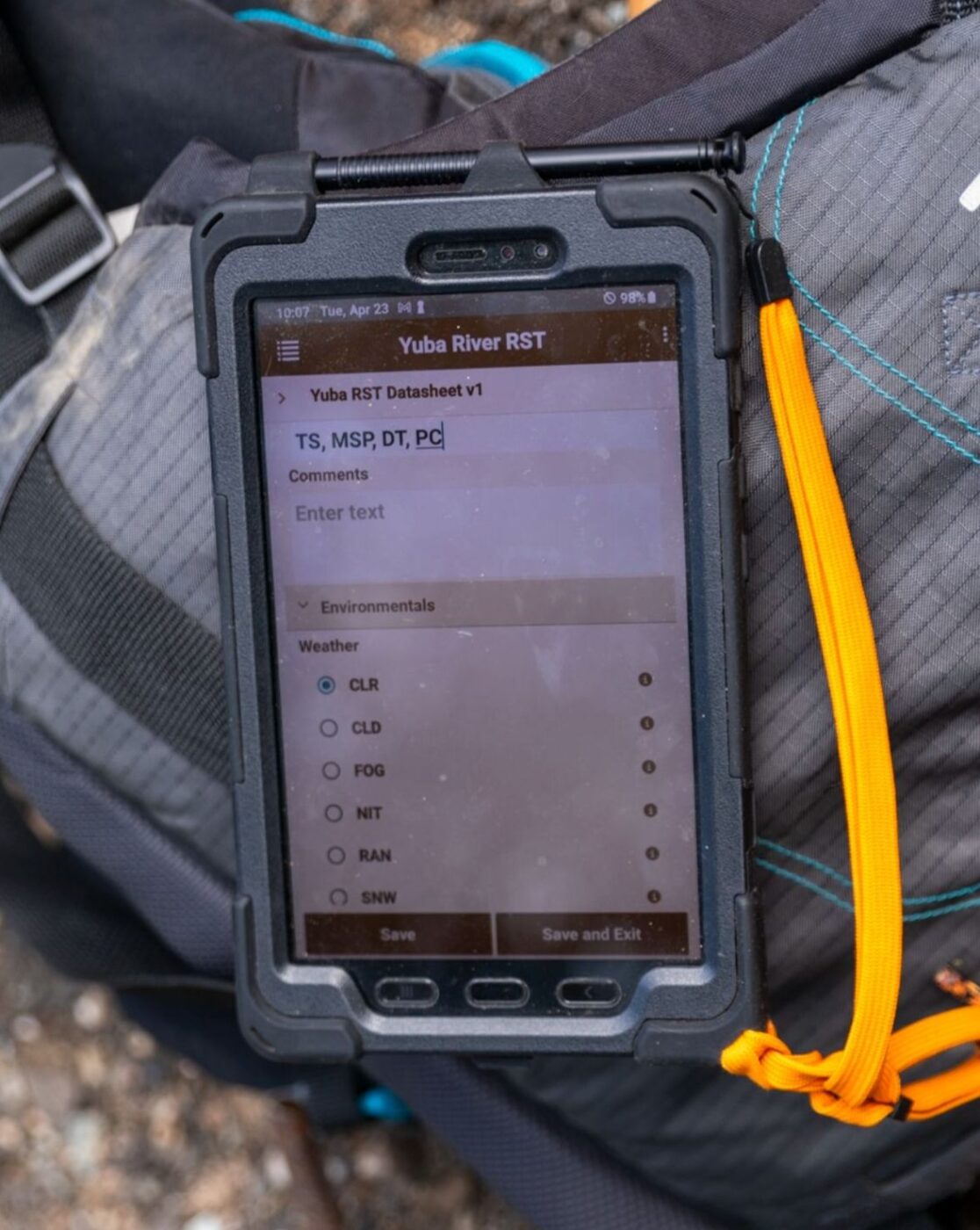Monday December 2, 2024

The fisheries world is gradually transitioning to electronic data entry for field surveys. Paperless data entry streamlines data quality control and assurance processes by removing the extra step of transcribing data sheets, eliminating transcription errors, and conserving mountains of paper. Change is never easy, and unique challenges come along with using electronics in the elements, but many fisheries professionals would agree that increases in efficiency and accuracy are worth the investment involved with learning new technologies.
In late 2022, FISHBIO began transitioning from paper data sheets to electronic forms using a data platform called Wildnote. Wildnote was originally developed to conduct wetland delineation surveys, but developed into a highly adaptable software used by a diverse group of environmental consultants and agencies. Wildnote worked with FISHBIO to create customized digital forms to fit unique data recording needs for a variety of projects. FISHBIO acquired several rugged field tablets to use for data entry in the field and dove headfirst into the world of electronic data entry. FISHBIO first used Wildnote on a handful of projects such as rotary screw trap monitoring, weir monitoring, and electrofishing surveys. After completing group training sessions on using the tablets and new data entry forms, FISHBIO biologists and technicians caught on to the process quickly.

Early on, troubleshooting and frequent communication with Wildnote staff was needed to accommodate the large amount of data collected in the fisheries field. For example, when processing rotary screw traps, fork length, total length, and standard length are recorded for the first 50 salmonid species captured each day. Fifty salmonid weights are taken weekly and scale samples are frequently collected. Initially, this amount of data caused the software to lag and sometimes freeze or crash. Switching the tablet to airplane mode in areas with poor cellular reception and periodically saving the data entry form resolved most of these issues. Even in airplane mode, data saved locally to the tablet and can sync to the database back in the office. As projects come online and new data entry forms are created, field staff can recommend changes to data entry forms and provide feedback on software issues that may arise.
Ensuring that fully charged tablets were added to the gear checklist took some adjustment, but is now part of the daily routine. FISHBIO field staff found that tablet touch screens do not work as well when they get wet, so technicians and biologists must keep tablets sheltered from rain and water splashes when recording data. Industry standard Rite in the Rain waterproof data sheets are still brought along to all surveys in case major technical problems come up. Wildnote is now used company wide at FISHBIO for most projects and not just for fisheries data.

Recently, FISHBIO started a series of surveys in almond orchards throughout the Central Valley to document bird species diversity within orchards. A list of bird species can be preloaded into the Wildnote form so survey biologists can search for a species or its four letter code (i.e., red tailed hawk = RTHA) from a drop down list. This feature is especially useful for birds since hundreds of bird species are documented in California.

Wildnote users with administrator access can choose forms stored in the library or easily create new forms by specifying fields and measurement units in the form creation function. FISHBIO’s database specialists created a new form to collect abundance and PIT tagging data for Southern California Coastal Steelhead in the Pajaro River Watershed. Preloading 10- to 15-digit PIT tag numbers saved hours of manual number entry and eliminated errors associated with duplicate tag numbers. Another unique software feature is the ability to take a picture for each processed fish. This function automatically associates GPS coordinates, measurement data, and tagging data with that image which can be useful to generate study area maps and identify where a fish was captured or released.
Other businesses in environmental consulting also use Wildnote to modernize their data entry procedures. Wetlands Research Associates (WRA), another California-based agency, noted that modernizing data entry allowed them to create consistent, comprehensive, and accurate deliverables much faster than when transcribing handwritten forms. Overall, Wildnote significantly streamlined FISHBIO’s data collection process, saving valuable time for FISHBIO staff and clients.
Header Image Caption: FISHBIO biologist recording data on river flow at a RST site.
This post was featured in our weekly e-newsletter, the Fish Report. You can subscribe to the Fish Report here.
